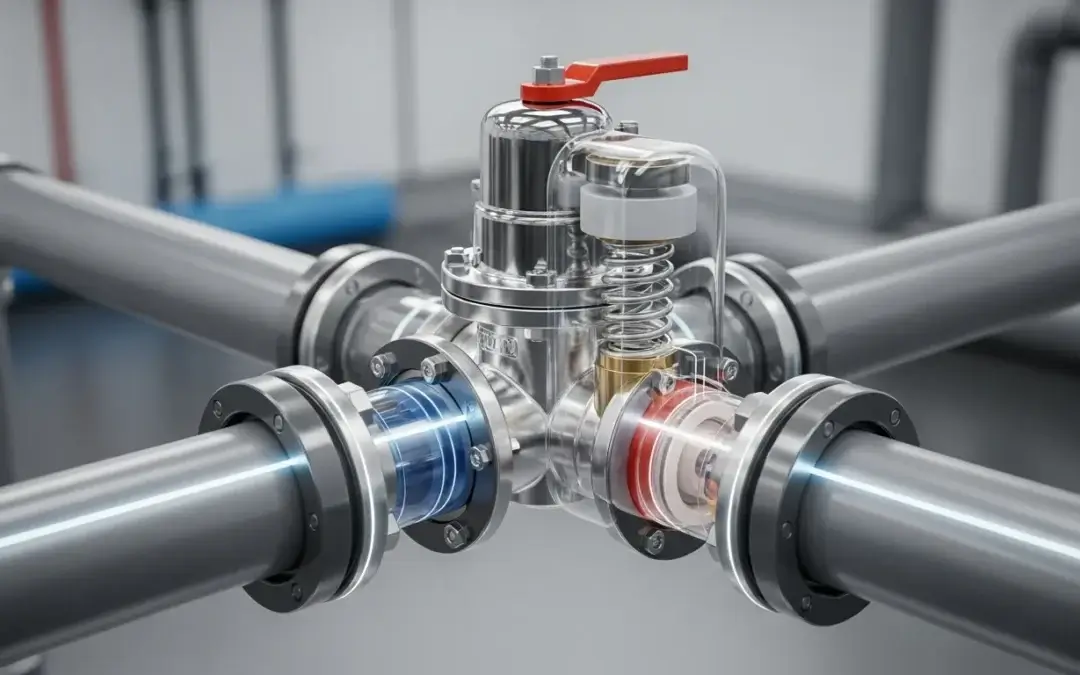How Do Pressure Reducing Valves Work? A Comprehensive Guide to Water Pressure Regulators
If you’ve ever dealt with the nightmare of burst pipes, the annoyance of leaking faucets, or frustratingly inconsistent water pressure in your home or business, the root cause might be excessive water pressure. While often unseen, high incoming water pressure can wreak havoc on your entire plumbing system. The essential solution? A pressure reducing valve (PRV), also commonly known as a water pressure regulator or pressure regulating valve.
But how exactly does this crucial plumbing device work to safeguard your property?
In this comprehensive guide, we’ll dive deep into everything you need to know about PRVs, including:
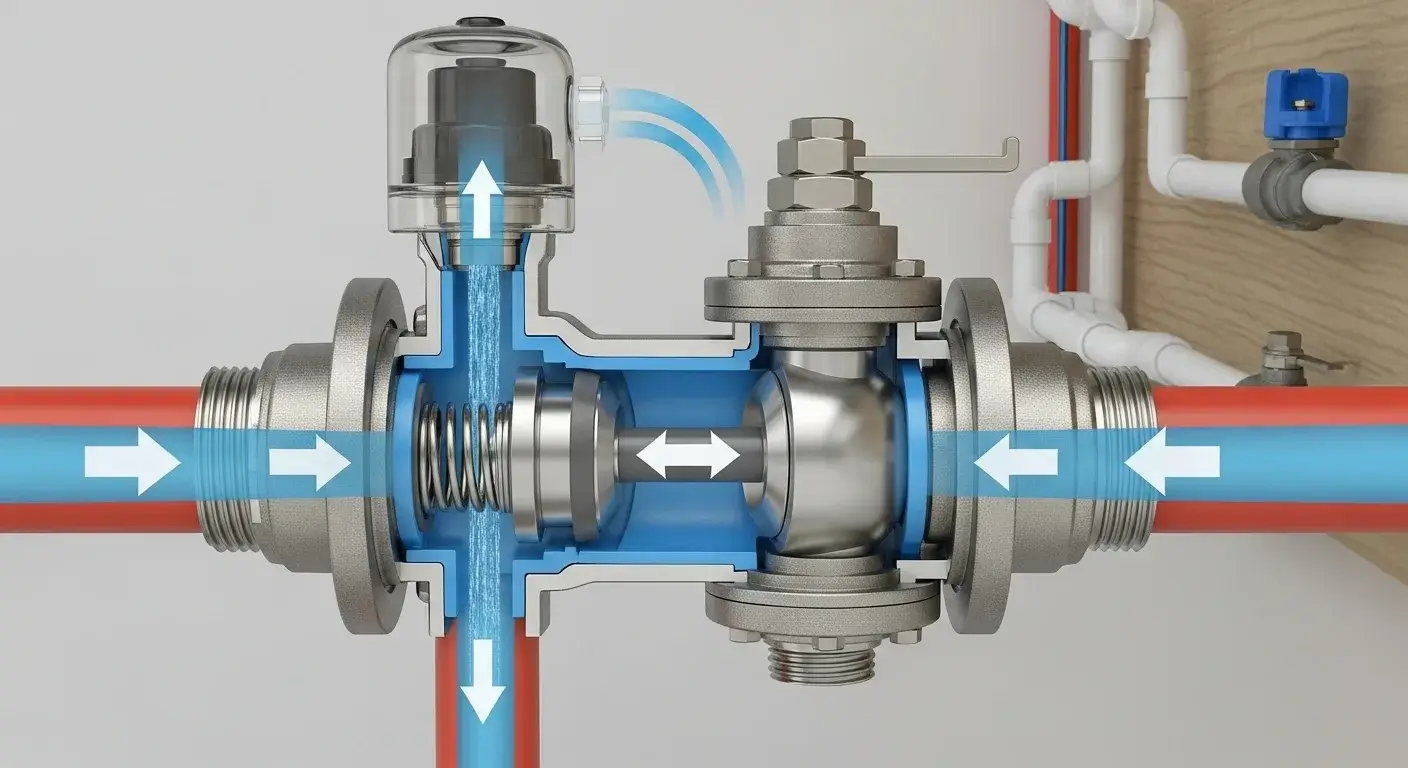
- What a pressure reducing valve is and its vital role in your plumbing.
- The internal workings and mechanics of how a PRV effectively regulates water pressure.
- The compelling reasons why your home or business absolutely needs one.
- Clear signs that your PRV is failing and needs attention.
- When it’s crucial to call a professional plumber for PRV installation, repair, or maintenance.
- Answers to frequently asked questions about pressure reducing valves.
At 907 Heating and Plumbing, we specialize in the expert installation, repair, and maintenance of PRVs to protect your valuable plumbing infrastructure. Let’s get started and understand this vital component!
What Is a Pressure Reducing Valve (PRV)? Understanding the Water Pressure Regulator
A pressure reducing valve (PRV) is a sophisticated plumbing device strategically installed on your main water supply line. Its primary function is to automatically lower high incoming municipal water pressure to a safer, more manageable level for your property – typically set between 50-80 PSI (Pounds per Square Inch). Think of it as a crucial gatekeeper for your home’s water supply.
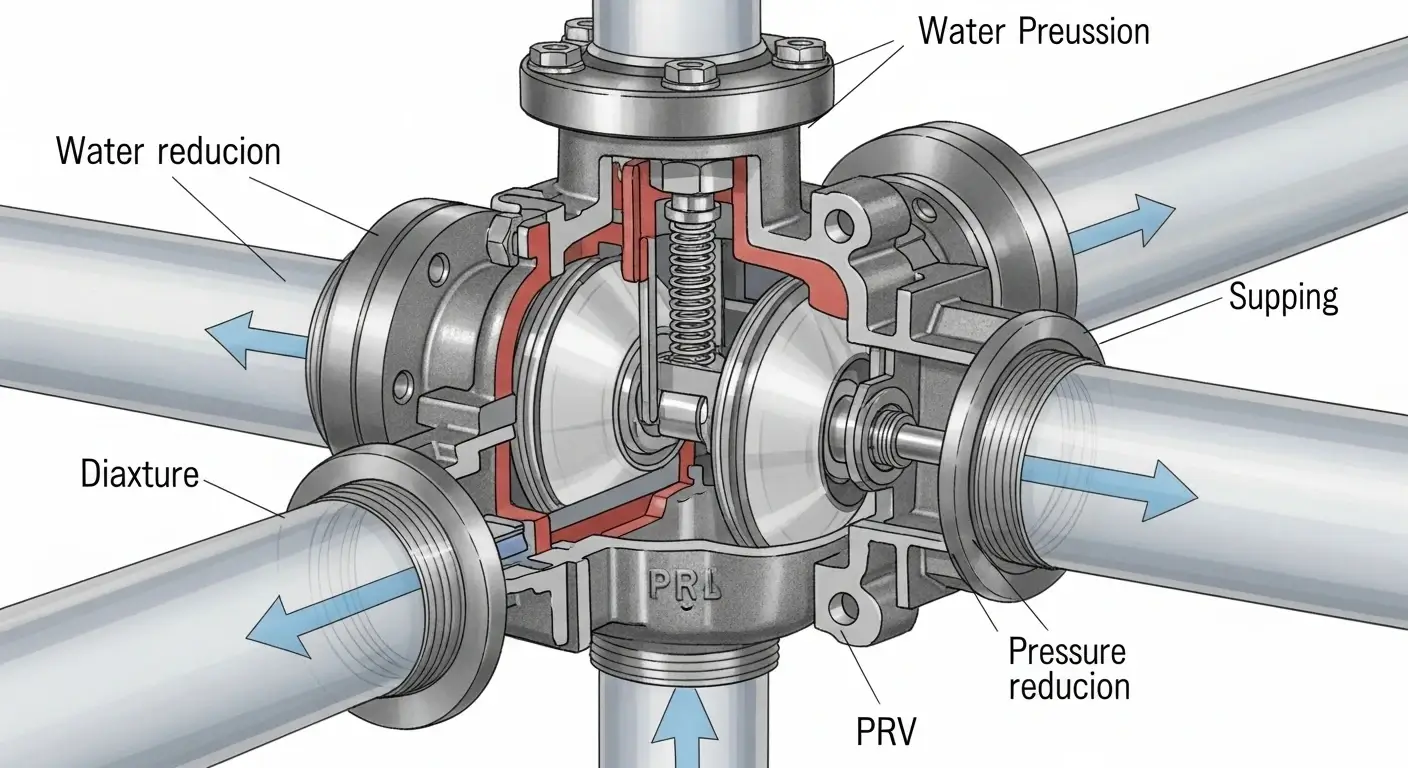
Why Is a PRV So Important? The Benefits of Proper Water Pressure Regulation
Without a properly functioning PRV, incoming water pressure can often exceed 100+ PSI, leading to a cascade of costly and inconvenient problems. Installing and maintaining a PRV offers numerous critical benefits:
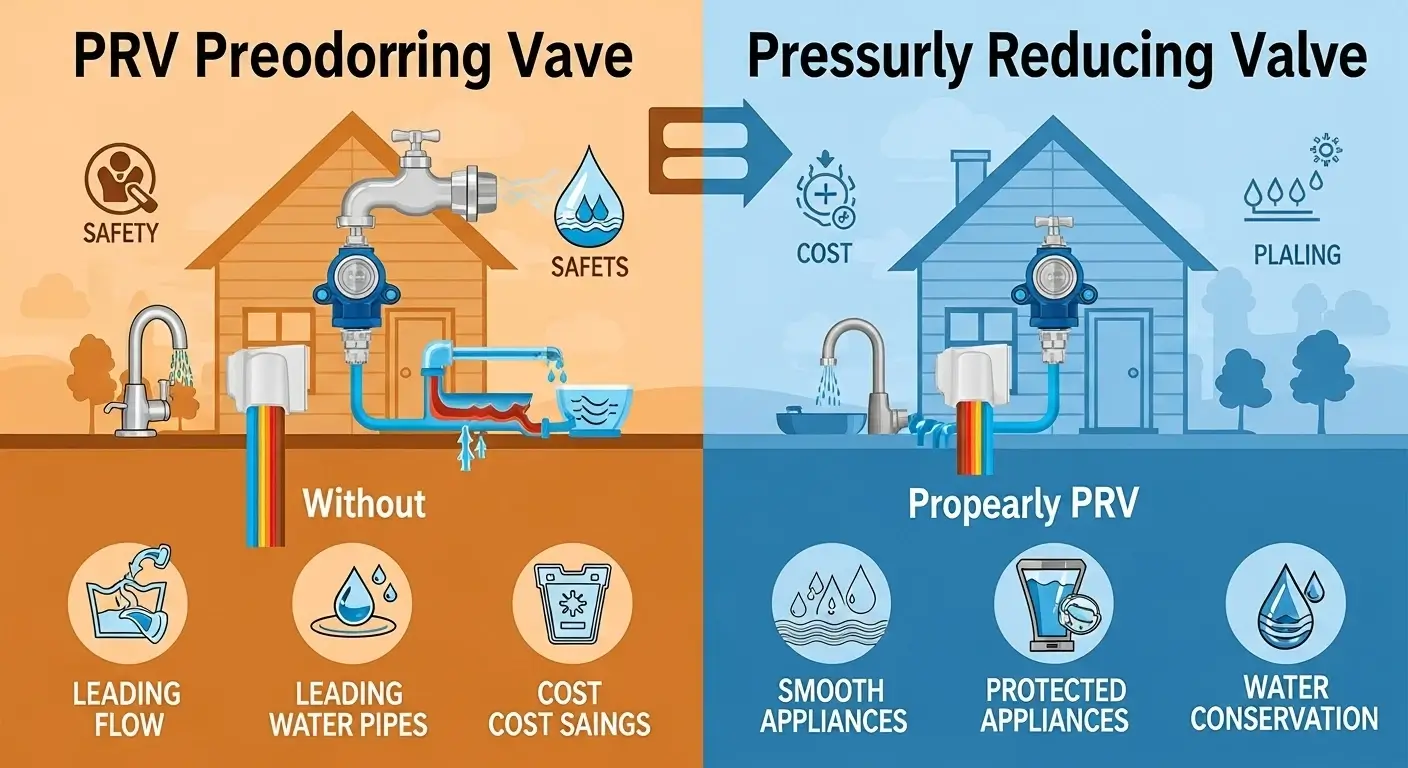
- Prevents Pipe Damage & Burst Pipes: High pressure constantly strains your pipes, increasing the risk of leaks, hairline cracks, and ultimately, catastrophic pipe bursts. A PRV significantly extends the lifespan of your plumbing system.
- Reduces Water Waste & High Bills: Uncontrolled high pressure can lead to excessive water flow from faucets, showers, and appliances, wasting water and inflating your utility bills.
- Protects Valuable Appliances: Your water heater, washing machine, dishwasher, refrigerator, and other water-using appliances are not designed to withstand constant high pressure. A PRV shields them from premature wear and tear, extending their lifespan and preventing expensive breakdowns.
- Eliminates Water Hammer: That jarring “hammering noise in pipes” (known as water hammer) is often a symptom of high water pressure and rapid valve closure. A PRV helps mitigate this damaging phenomenon.
- Ensures Consistent Water Flow: A PRV provides a stable, uniform downstream pressure to all your fixtures, ensuring comfortable and reliable water delivery for showering, washing, and other daily tasks.
- Enhances Plumbing System Safety: By maintaining optimal pressure, a PRV contributes to the overall safety and integrity of your home’s plumbing.
How Does a Pressure Reducing Valve Work? The Mechanics Explained
A PRV operates through a clever spring-loaded diaphragm (or piston) mechanism and an adjustable screw to precisely control water pressure. Here’s a step-by-step breakdown of its internal workings:
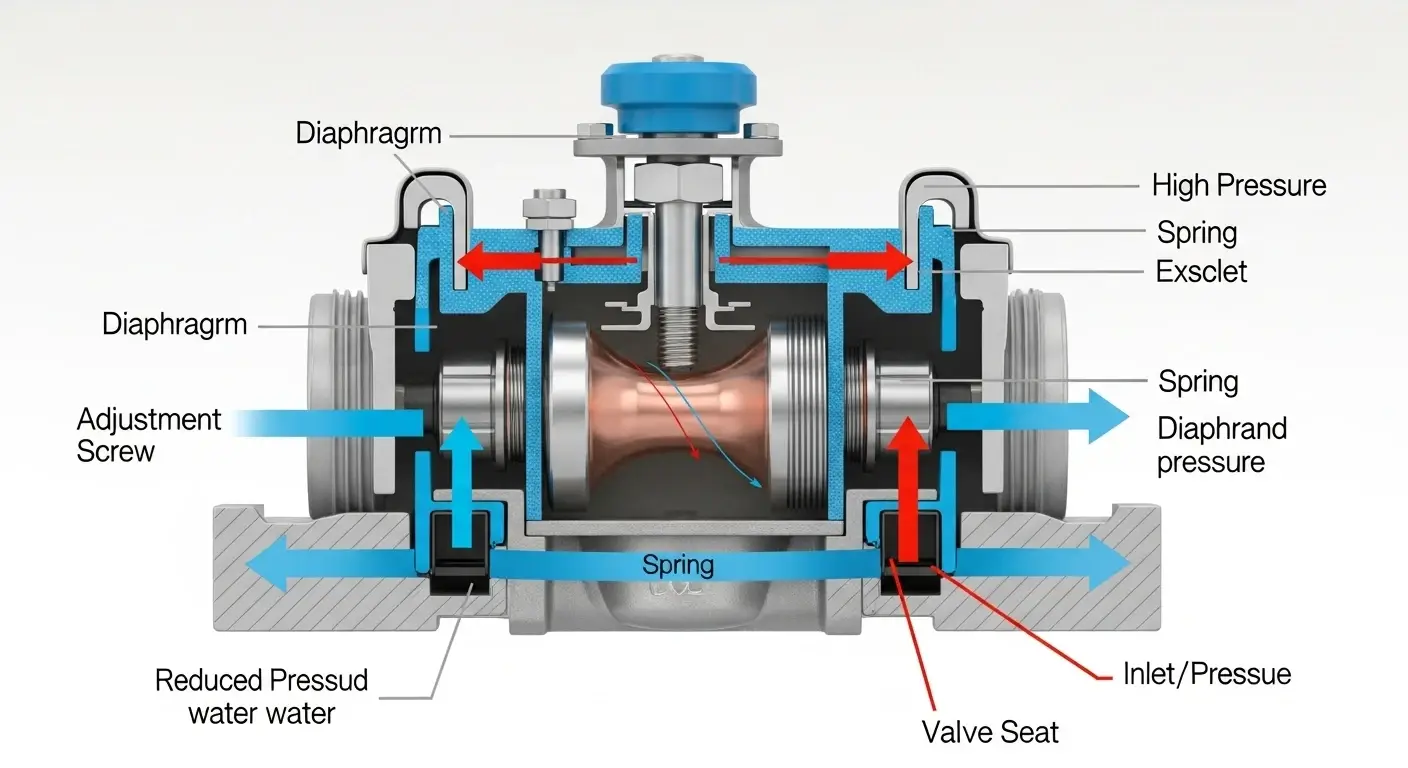
- High-Pressure Water Entry (Inlet Port): High-pressure water from the main supply line enters the PRV through its inlet port. This is the upstream pressure.
- Sensing Mechanism (Diaphragm/Piston): Inside the valve, a flexible diaphragm (or a sturdy piston) acts as a sensor. This diaphragm is directly exposed to the incoming upstream water pressure on one side and a controlled chamber with a spring on the other.
- Spring-Loaded Regulation: A calibrated spring exerts an opposing force on the diaphragm. This spring is set to a specific desired output pressure (e.g., 60 PSI) via the adjustment screw.
- Pressure Adjustment & Flow Control (Valve Seat & Disc):
- If Incoming Pressure is Too High: The high incoming pressure pushes against the diaphragm, overcoming the spring’s force. This causes the diaphragm to move, which in turn moves a disc (or poppet), partially closing off the valve seat. This constricts the flow of water, effectively reducing the pressure.
- If Pressure Drops (or is too Low): As the water flows through the constricted opening, its pressure drops. The spring then pushes the diaphragm back, opening the valve slightly more. This allows increased flow to maintain the desired set pressure at the outlet port.
- Consistent Output Pressure (Outlet Port): The water exits the PRV through the outlet port at a safe, controlled, and consistent downstream pressure (your desired household pressure, typically between 50-80 PSI).
Pro Tip: Adjusting Your PRV Pressure
Most PRVs feature an easily accessible adjustment screw. Turning this screw clockwise typically increases the output pressure, while turning it counterclockwise decreases it. Always use a water pressure gauge connected to an outdoor spigot or other accessible point to accurately measure the pressure after adjustment.
Signs Your Pressure Reducing Valve Is Failing: When to Suspect a Problem
A malfunctioning PRV can manifest in several noticeable ways, indicating it may need repair or replacement:
This is the most obvious sign. If your pressure is suddenly fluctuating wildly, or is constantly too high or too low, your PRV is likely failing to regulate.
While water hammer can have other causes, a failing PRV is a common culprit, especially if the sounds intensify or become more frequent.
Any water weeping or dripping directly from the PRV itself is a clear sign of internal failure or a worn-out seal.
If the pressure in your kitchen sink is different from your bathroom shower, the PRV might not be evenly distributing pressure.
This can occur if hot and cold water pressures are imbalanced due to a faulty PRV.
High, unregulated pressure can overwork these components.
If you observe any of these issues, it’s crucial to have your PRV inspected by a professional to prevent further plumbing damage.
Do You Need a Pressure Reducing Valve? Assessing Your Home’s Needs
Not every property requires a PRV, but many benefit immensely. You likely need a PRV if:
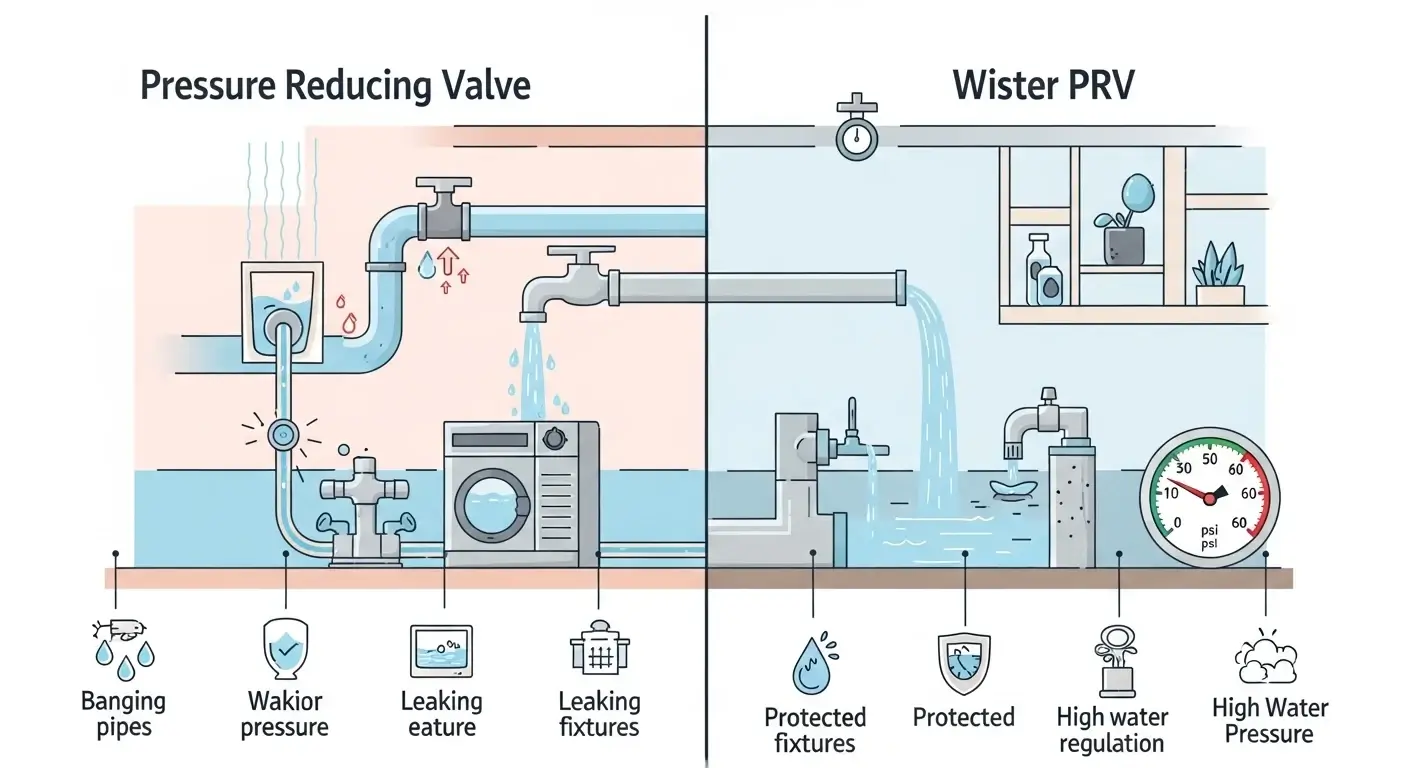
At 907 Heating and Plumbing, we offer comprehensive water pressure testing and expert installation of high-quality PRVs to safeguard your plumbing system and ensure optimal water pressure throughout your property.
When to Call a Professional Plumber for PRV Services
While some minor PRV adjustments might seem DIY-friendly, professional plumbing help is highly recommended for most PRV-related tasks to ensure proper installation, longevity, and safety:
Contact 907 Heating and Plumbing for expert PRV installation, repair, and maintenance. Our experienced plumbers are equipped to diagnose issues accurately and provide lasting solutions.
FAQs About Pressure Reducing Valves
1. What’s the ideal water pressure for a home?
Most plumbing experts agree that the ideal water pressure for a residential property is between 50-70 PSI. Pressures consistently above 80 PSI significantly increase the risk of pipe damage, leaks, and appliance wear.
2. How long does a pressure reducing valve typically last?
A well-maintained PRV generally lasts between 10-15 years. However, factors like extremely hard water, sediment buildup, or frequent pressure surges in your municipal supply can shorten its lifespan. Regular inspections can help identify potential issues early.
3. Can I install a PRV myself?
While theoretically possible for a skilled DIYer, improper installation is a common cause of PRV failures, leaks, and even damage to your entire plumbing system. We highly recommend hiring a licensed and insured plumber to ensure correct setup, compliance with local codes, and proper functioning.
4. How much does a PRV replacement cost?
The average cost for PRV replacement typically ranges from $200-$500, but this can vary depending on factors such as labor rates in Your Service Area, the specific type and brand of valve needed, and the complexity of the installation. This cost often includes the new valve and professional labor.
5. Is a thermal expansion tank necessary with a PRV?
In many cases, yes. When a PRV is installed, it creates a “closed” plumbing system. As water heats up in your water heater, it expands. Without an expansion tank to absorb this increased volume, pressure can build up dangerously, potentially damaging your water heater or other fixtures. Most local plumbing codes now mandate expansion tanks with PRV installations.
Final Thoughts: Protect Your Plumbing with a Pressure Reducing Valve
A pressure reducing valve is not just an optional accessory; it’s an essential device for protecting your entire plumbing system, extending the life of your appliances, conserving water, and preventing costly disasters. If your water pressure is too high, don’t wait for a pipe burst or a damaged appliance – get a PRV inspected or installed today!
Need expert help with your PRV?
907 Heating and Plumbing provides expert PRV installation, repair, and maintenance services.
Call us today at 877-570-8952 for a free consultation and ensure your home’s plumbing is protected!

